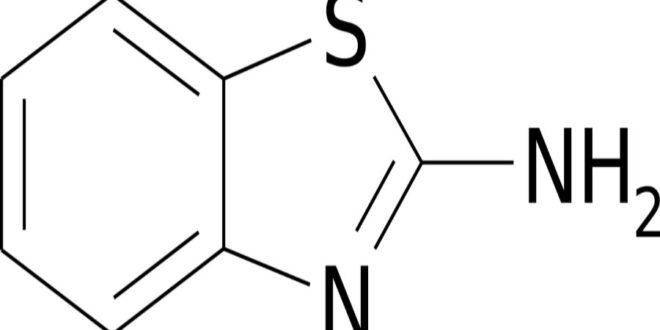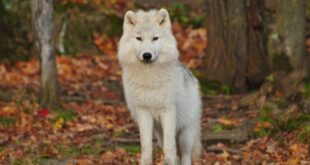How do humans affect the nitrogen cycle? The nitrogen cycle is a vital process in nature, allowing for the transformation and recycling of nitrogen in various forms.
However, with the increasing influence of human activities on the environment, there has been a significant impact on the nitrogen cycle.
Humans have altered the nitrogen cycle through a variety of factors. These activities have led to an imbalance in the nitrogen cycle, resulting in negative consequences for terrestrial and aquatic ecosystems.
Fortunately, there are several actions we can take to mitigate these negative effects and restore the equilibrium of the nitrogen cycle. But before that, let’s first learn how our actions affect the nitrogen cycle.
How Do Humans Affect The Nitrogen Cycle?
1. Agriculture
One way humans affect the nitrogen cycle in the agriculture sector is through synthetic fertilizers. These fertilizers contain high amounts of nitrogen, which is released into the soil when applied to crops.
When it rains, or excessive irrigation occurs, the nitrogen leaches into the soil and runs off into nearby water sources, contaminating them.
The Dark Side Of It
When this nitrogen-based pollution enters water bodies, it becomes a food source for algal blooms. As these blooms grow and eventually decompose, they consume large amounts of oxygen from the water in eutrophication.
This depletion of oxygen creates “dead zones” in water bodies, where aquatic life struggles to survive due to the lack of oxygen.
The overgrowth of algae also disrupts the balance of the aquatic ecosystem, affecting fish and other aquatic organisms that rely on a healthy environment.
2. Industrial emission
Industries release nitrogen oxides into the atmosphere as byproducts of combustion processes, such as those in power plants and vehicles. Experts estimate that by 20230, humans will have added more nitrogen to the atmosphere than microbial.
The Dark Side Of It
The release of nitrogen oxides into the atmosphere contributes to acid rain and nitrogen deposition. Acid rain occurs when nitrogen oxides react with atmospheric moisture, forming nitric acid.
This acid then falls to the ground through precipitation, affecting soil and water quality. Nitrogen deposition refers to settling nitrogen compounds onto land or water surfaces.
It can lead to nutrient imbalances in ecosystems and disrupt natural cycles, including the nitrogen cycle. The excess nitrogen can also have negative impacts on plant growth and biodiversity.
3. Deforestation
When land is clear of agriculture and development, it reduces the natural nitrogen uptake by plants and trees.
This is because the vegetation that would normally absorb nitrogen from the atmosphere and soil is absent, resulting in increased nitrogen levels in the soil and atmosphere.
4. Nitrogen-fixing plants
Some plants, especially legumes, can convert atmospheric nitrogen into a biologically available form through nitrogen fixation.
These plants form symbiotic relationships with nitrogen-fixing bacteria that help convert nitrogen gas into ammonia, which plants can use.
Unlike other human practices that we have looked at, the practice of nitrogen-fixing plants contributes positively to nitrogen cycling by reducing the reliance on synthetic fertilizers.
5. Burning fossils fuel
When fossil fuels, such as coal, oil, and natural gas, are burned for energy, they release nitrogen oxides (NOx) into the atmosphere.
Nitrogen oxides are compounds that contain nitrogen and oxygen atoms. Nitric oxide (NO) and nitrogen dioxide (NO2) are the main nitrogen oxides released.
6. Wastewater treatment
Wastewater contains various forms of nitrogen, including ammonia (NH3), nitrate (NO3-), and organic nitrogen compounds. During wastewater treatment, specific processes can remove nitrogen compounds.
For example, nitrification converts ammonia to nitrate, and de-nitrification converts nitrate to nitrogen gas (N2), which finds its way into the atmosphere. And this alters the natural balance of nitrogen compounds in ecosystems.
Understanding The Nitrogen Cycle
What is the nitrogen cycle? The nitrogen cycle is a natural process that involves the transformation and cycling of nitrogen in various forms throughout the environment.
Nitrogen, an essential element for life, exists in the atmosphere as a gas but needs to be converted into other forms, such as nitrate or ammonium, to be utilized by plants and animals.
The nitrogen cycle consists of several steps: nitrogen fixation, nitrification, assimilation, ammonification, and de-nitrification.
These processes are carried out by different microorganisms and plants, contributing to the overall balance and availability of nitrogen in ecosystems. Now let’s look at each stage of the nitrogen cycle.
1. Nitrogen fixation
Nitrogen fixation is the conversion of atmospheric nitrogen gas (N₂) into more accessible forms, such as ammonia (NH₃) or nitrate (NO₃⁻).
N₂ + 3H₂ → 2NH₃
2. Nitrification
Nitrification occurs primarily in soil and aquatic environments, and it’s a two-step process that converts ammonia (NH₃) into nitrate (NO₃⁻) through the intermediacy of nitrite (NO₂⁻).
The first step involves ammonia-oxidizing bacteria that oxidize ammonia into nitrite, and the second step involves nitrite-oxidizing bacteria that further oxidize nitrite into nitrate.
Ammonia (NH₃) is oxidized to nitrite (NO₂⁻) by ammonia-oxidizing bacteria (Nitrosomonas).
NH₃ + O₂ → NO₂⁻ + H₂O
Nitrite (NO₂⁻) is further oxidized to nitrate (NO₃⁻) by nitrite-oxidizing bacteria (Nitrobacter).
NO₂⁻ + O₂ → NO₃⁻
3. Assimilation
Assimilation is the stage where plants and animals incorporate nitrogen into their tissues. Plants take up nitrate through their roots and use it to synthesize proteins and other essential molecules.
Animals then consume plants or other animals to obtain the nitrogen-containing compounds they need for their growth.
4. Ammonification
After assimilation, nitrogen enters the stage of ammonification. This decomposes organic matter, such as dead plants or animal waste, by decomposer bacteria and fungi.
During this process, organic nitrogen compounds are broken down into ammonia and ammonium ions, which plants and other organisms can use in the next stages of the nitrogen cycle.
5. De-nitrification
Denitrifying bacteria convert nitrate back into atmospheric nitrogen gas, completing the cycle. This occurs in oxygen-depleted environments such as wetlands or waterlogged soils.
De-nitrification helps to balance the nitrogen cycle by reducing the accumulation of excess nitrates, preventing their potential negative impacts on ecosystems.
The Importance of Nitrogen Cycle
- Converts inert nitrogen gas into a usable form for plants, facilitating their growth and development.
- The release of nitrates and nitrites into the soil due to bacterial activity enriches the soil with essential nutrients required for cultivation.
- Plants can synthesize chlorophyll by utilizing nitrogen compounds.
- The process of ammonification helps decompose animal and plant matter, which indirectly contributes to environmental cleanliness.
How Can We Restore The Nitrogen Cycle?
We can implement several key strategies to restore the nitrogen cycle.
1. Planting legumes – Planting leguminous crops is a natural way to restore the nitrogen cycle. Legumes, such as beans, peas, and clover, can uniquely form symbiotic relationships with nitrogen-fixing bacteria called rhizobia.
These bacteria reside in nodules on the plant’s roots and convert atmospheric nitrogen gas (N₂) into ammonia (NH₃), which the plant can utilize for its growth.
Incorporating leguminous crops into agricultural rotations can enhance soil fertility, reduce the need for synthetic nitrogen fertilizers, and promote sustainable farming practices.
2. Reduce fertilizer use – Excessive use of synthetic fertilizers contributes to environmental nitrogen pollution. We need to adopt practices that minimize fertilizer application to restore the nitrogen cycle.
This includes precision agriculture techniques that apply only fertilizers where and when needed, using nutrient management plans based on soil testing and crop requirements.
Additionally, utilizing slow-release fertilizers reduces the risk of nutrient runoff and leaching, allowing plants to absorb nutrients more efficiently.
3. Through afforestation and reforestation – Trees act as natural filters, capturing and incorporating nitrogen from the air into their biomass. Planting trees where deforestation has occurred can restore the natural nitrogen cycle.
Furthermore, forests provide a habitat for nitrogen-fixing bacteria and other microorganisms contributing to ecosystems’ nitrogen cycling.
4. Efficient wastewater treatment practices – Wastewater often contains high nitrogen levels, which can be harmful if released untreated into water bodies.
Advanced treatment technologies, such as biological nutrient removal systems, can remove excess nitrogen from wastewater before discharging it.
Conclusion
How do humans affect the nitrogen cycle? Humans have a significant impact on the nitrogen cycle. Humans greatly alter the natural nitrogen cycle through various activities such as industrial agriculture, burning fossil fuels, and wastewater discharge.
While most of these activities have increased nitrogen pollution in the environment, a few are reducing the nitrogen levels in the atmosphere. And as seen, excess nitrogen in our ecosystem is not something we need; it has far-reaching consequences.
Therefore, we must adopt sustainable practices and minimize our nitrogen footprint to mitigate its negative impacts.
 Being Human
Being Human




